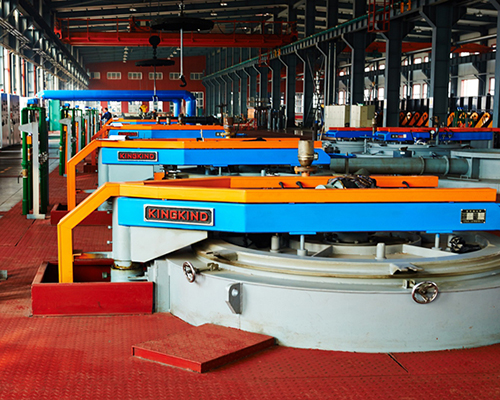Reasons for Cracking of Well Type Nitriding Furnace Shell
1、 Determination principle of preparatory treatment
General structural steel parts shall be quenched and tempered. The high temperature tempering temperature shall be about 20 ℃ higher than the nitriding temperature, and the holding time shall not be too long
For workpieces with low impact toughness requirements, normalizing treatment can be adopted, but the normalizing cooling speed should be fast. For work with large section size, normalizing 38CrMoAl steel should not be used. Otherwise, it is easy to produce needle shaped nitrides in the nitriding layer. The tool and die steel should be quenched tempered before nitriding. Annealing is not allowed for some complex and precise parts. Before nitriding, one or more times of stress relief can be carried out and the temperature can be slowly raised.
2、 Work preparation
1. Air tightness inspection
Before nitriding, the pipe joints of the heating furnace, nitriding tank and the whole nitriding system shall be checked for air tightness to ensure no ammonia leakage and unimpeded flow in the pipeline.
2. Polishing and cleaning of workpiece working surface
The nitrided surface shall be carefully polished and inspected. The nitrided surface shall be free of oil stains, rust, sharp corners, burrs, bruises and dirt that cannot be washed off; For the non nitriding surface, check whether the protection and coating are complete.

3. Check for air leakage
Soak the phenolphthalein test paper and place it at the suspected air leak. If the test paper turns red, it indicates the air leak
3、 Regulations of well type furnace process specification
1. Nitriding temperature
1.1 It is commonly used at 500-530 ℃, which can ensure that the nitride has a large dispersion and high hardness
1.2. With the increase of nitriding temperature, the depth of nitriding layer increases, while the hardness decreases significantly, which is greater than 550 ℃ nitriding, and the high hardness of most steel grades is lower than 1000HV
1.3 With two-stage nitriding, the temperature of the second stage is usually lower than 560 ℃
2. Nitriding time
2.1 The nitriding layer thickens with the extension of time. The growth rate is large at the initial stage, and gradually slows down later. Generally, the penetration rate is about 0.01 mm/h
2.2 With the prolongation of the holding time, the nitrides aggregate and grow up, and the hardness decreases. The higher the temperature, the longer the time, the more severe the growth
3. Ammonia decomposition rate
3.1 When the decomposition rate is 20-40%, there are many active nitrogen atoms, and the part surface can absorb a large amount of nitrogen
3.2 If the decomposition rate exceeds 60%, the hydrogen content in the atmosphere will reach more than 52%, which will produce denitrification. At this time, not only the number of active nitrogen atoms decreases, but also a large number of hydrogen molecules and nitrogen molecules stop near the surface of the part, making nitrogen atoms difficult to be absorbed by the surface, thus reducing the nitrogen content on the surface of the part and reducing the depth of the nitriding layer.
4、 Nitriding operation
1. Temperature rise
Before temperature rise, the ammonia gas shall be vented. The ammonia gas flow is more than twice of the normal flow. If the deformation requirements are strict, the step temperature rise can be adopted, or the temperature rise speed can be less than 50 °/h.
2. Exhaust
Generally, the superheated gas is discharged at 150-200 ℃. During the exhaust process, PH test paper can be used to check the sealing of the furnace tank and pipeline; In the exhaust stage, ammonia gas is continuously introduced to make the furnace pressure reach 200-400Pa (U-shaped tube is filled with oil). The air cannot be removed and the exhaust pipe cannot be ignited. In the heating stage, the ammonia decomposition rate can reach 70%. The volume of ammonia in the furnace gas is more than 95%, which can reduce the ammonia flow
3. Thermal insulation
When the temperature reaches the nitriding temperature, adjust the ammonia flow to make the ammonia decomposition rate reach the range required by the process, control the furnace pressure between 200-600Pa, and measure the ammonia decomposition rate every 15-30 minutes.
4. Cooling
After the completion of nitriding, close the exhaust valve, reduce the ammonia flow, make the ammonia decomposition rate reach about 70%, keep the temperature for 2 hours, and reduce the surface brittleness of the workpiece; Power off to cool down, maintain positive pressure in the furnace, and discharge the furnace when the temperature drops below 150.
The above is the relevant content introduced to you by the well type carburizing furnace, and I hope it will be helpful to you.